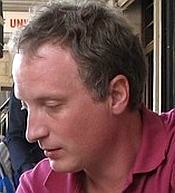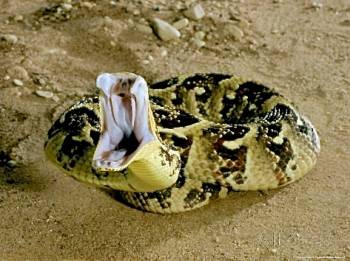“Many times he has entered prison. Many times he has smelled that scent of stale, confined humanity; has felt the air, thick with the heat of hundreds of bodies…Every time, panic threatens to rise within him. Every time, he shudders…Reminds himself that unlike these others, he gets to walk out. But not this time. The guard behind him chuckles. ‘You’re not going to find many friends in here, Maasai. You’d better learn to sleep with your eyes open.”
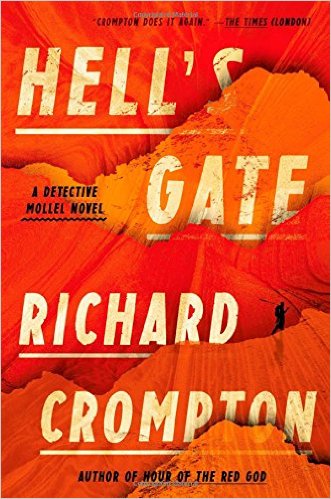 In this quotation of just eighty words from the first page of Hell’s Gate, author Richard Crompton establishes the Kenyan prison setting, its sights, sounds and smells, its fraught atmosphere, the state of mind of the prisoner, his cultural background, the antagonistic attitude of the guard, and the guard’s triumphant, even delighted, threatening of his prisoner. It is not because the prisoner is a Maasai that he is likely to be tormented, however. In this case, the prisoner is also known as Detective Mollel of the Nairobi police. Mollel had been a Maasai moran twenty years ago until he left his roots in “Maasai-land” in southern Kenya to begin work as a policeman in Nairobi, hoping to bring justice to Kenya’s hard-working poor within an atmosphere in which corruption is a way of life. For even the most dedicated police officers, creating a sense of peace is often more important than bringing pure justice, and Mollel has been a constant trial to many of his superiors and to the judicial system. Constantly challenging and questioning them, he is also cursed with a hair-trigger temper and willingness to do violence to bring about “justice.” This has resulted in his being moved around among police departments throughout the country. Now he is imprisoned for an unspecified crime, and he must somehow survive among a number of former policemen he helped send to jail.
In this quotation of just eighty words from the first page of Hell’s Gate, author Richard Crompton establishes the Kenyan prison setting, its sights, sounds and smells, its fraught atmosphere, the state of mind of the prisoner, his cultural background, the antagonistic attitude of the guard, and the guard’s triumphant, even delighted, threatening of his prisoner. It is not because the prisoner is a Maasai that he is likely to be tormented, however. In this case, the prisoner is also known as Detective Mollel of the Nairobi police. Mollel had been a Maasai moran twenty years ago until he left his roots in “Maasai-land” in southern Kenya to begin work as a policeman in Nairobi, hoping to bring justice to Kenya’s hard-working poor within an atmosphere in which corruption is a way of life. For even the most dedicated police officers, creating a sense of peace is often more important than bringing pure justice, and Mollel has been a constant trial to many of his superiors and to the judicial system. Constantly challenging and questioning them, he is also cursed with a hair-trigger temper and willingness to do violence to bring about “justice.” This has resulted in his being moved around among police departments throughout the country. Now he is imprisoned for an unspecified crime, and he must somehow survive among a number of former policemen he helped send to jail.
As Mollel takes a hard look at his new mates, he wonders which and how many are involved in the endemic extortion and payoffs which curse not only the local police department but many other investigatory agencies throughout Kenya. Poor victims are often ignored. On flower farms adjacent to Lake Naivasha, young women work in the greenhouses in order to live, but many are raped, only to have their claims regarded as frivolous, the evidence lost. Here one of these desperate women is later arrested for illegally selling some of the roses from the flower farm, and shortly after that, she is found dead, drowned near the lake and its intake pipe, and Mollel wonders if she has killed herself. It is this seemingly simple plot which develops into a complex story of poaching, smuggling, corruption, and vigilante justice.
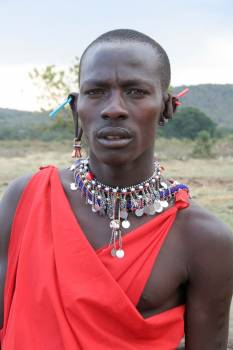
The Maasai begin stretching the ear lobes of their future warriors when they are children. Note the length of the one on the left side, and the one on the right, folded and curled around the ear.
Author Crompton, who resides in Nairobi with his family, carefully reconstructs Kenya’s recent past, filled with local color and all the tensions and rivalries among the Maasai, Kikuyo, Luo, and Kalinjin ethnic groups, which have competed and warred since the beginning of time. At the same time, he develops a plot involving officers from the Kenya Wildlife Service, the police from the small station to which Mollel has been assigned near Hell’s Gate National Park, and investigators from the International Criminal Court who are in charge of trying and punishing (or releasing) those who are corrupt on an international scale. Poaching and the trade in rhino horn, bribery of government officials, fake money transfers and payoffs, smuggling, a plot by Chinese businessmen who want someone to be assassinated, the aftermath of the bombing of the American Embassy in Nairobi in 1998, and the heightened ethnic tensions resulting from the recent burning of a church and the deaths of five hundred people in the aftermath of Kenya’s “stolen” election of 2007, all play a part in this plot, depicting the complexities of life in Kenya, even for “ordinary” people trying to mind their own business and take care of themselves and their families.
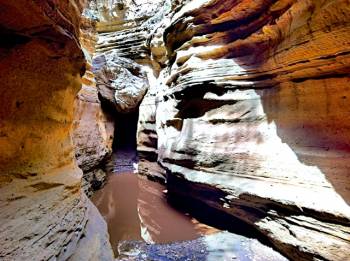
The entrance to the Devil’s Bedroom at Hell’s Gate, near Lake Naivasha, a site which features in the novel. Note the huge boulder balanced over the entrance.
Of particular interest to Crompton is the culture of the Maasai, which Mollel both represents and rejects. Their semi-nomadic culture and their ability to live off the land (even making their houses from animal dung and native grasses) combine with their beliefs in a nature god and the devil, which they honor in shamanistic ceremonies, to make them confident in their own lives, believing that nature will reward and punish. Mollel has moved away from his past because he promised his wife that he would bring up their son, now twelve, with opportunities in the city not available in Maasai life on the plains. His work in the aftermath of the bombing of the American Embassy made Mollel a public hero when he saved over fifty people, and it is for this reason that authorities have not fired him for his insubordination, instead transferring him to departments all over Kenya.
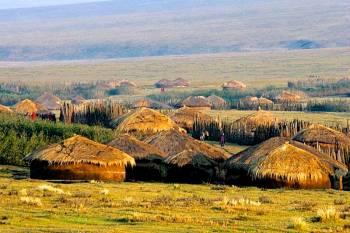
A Maasai Village, with houses made of dung and grass, and with thatched roofs. The village is surrounded by thorn bushes to deter lions.
Mollel is no saint, however. Like the Maasai on the range, he dislikes their traditional enemy, the Kikuyu, and it is this that makes him resent Shadrack, a young Kikuyu member of the “Rhino Force” of the police, with whom he works in Hell’s Gate, near Lake Naivasha. He is moved, however, when Shadrack talks about the tent cities, set up after the violence which followed the “stolen” election of 2007. Incumbent President Mwai Kibaki had been declared winner, though international observers confirmed that the votes had been manipulated. Violence broke out, resulting, as Wikipedia confirms, with “the murder of over fifty unarmed Kikuyu women and children, some as young as a month old, by locking them in a church and burning them alive near Eldoret, on New Year’s Day.” Shadrack’s information regarding the IDP camp (for Internally Displaced Persons) is heart-rending: “three families to a tent, twenty people or more in a space the size of your room. No running water. Latrines? Forget about it…They didn’t have time to bring anything useful, so they turned up in Naivasha with what? TVs. There must have been a hundred TVs piled up near the gate of that IDP camp. All useless. No electricity to run them.”

A man grieves at the site of a church in Eldoret, burned after the elections of 2008, with over fifty Kikuyu women and children burned to death inside.
The irony of the useless TVs parallels other ironies in this novel about a developing country filled with competing interests. The deaths of some of the characters, killed in bizarre ways no one in the US would ever dream of, combine with scenes of touching honesty to create a novel filled with surprises and new visions of contemporary life in Kenya. And though there are enough plot lines here to fill two or three books, the author keeps his style so simple and the novel so filled with fascinating new information that few will begrudge the author his expansive plot.
ALSO by Crompton: HOUR OF THE RED GOD
Photos, in order: The author’s photo by Gregory Warner, NPR, appears on http://freshfiction.com/
The Maasai moran is shown on http://www.wanderlust.co.uk
Hell’s Gate leads to the Devil’s Bedroom, shown here, near Lake Naivasha. This was part of a climactic scene near the end of the book. http://andrewhy.de/
The Maasai village is from https://commons.wikimedia.org
The Reuters photo of the burned church at Eldoret, where fifty women and children were burned to death following the rigged election of the President Mwai Kibaki in 2008 appears on http://content.time.com/
The puff adder is determined to have been “responsible” for the murder of Mollel’s “uncle.” Note the fangs: http://www.allposters.se/
